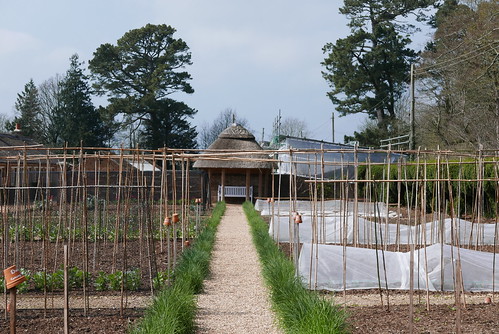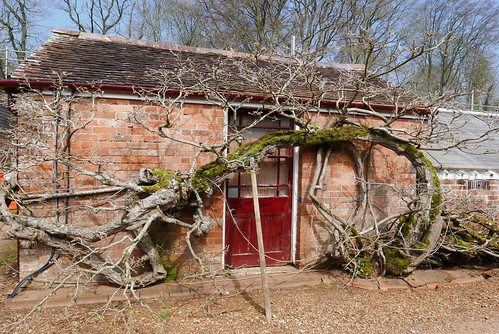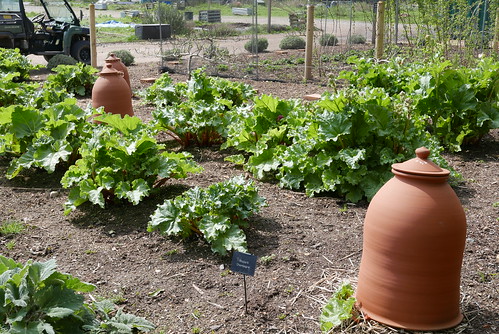Friday, 19 October 2018
You think coffee grounds are good for plants.
A quick internet search for “coffee grounds + plants” will draw up close to four million hits, with consistent claims they can add essential minerals to the soil, boost populations of friendly soil bacteria and even reduce the pH of growing media for acid-loving plants like rhododendrons.
The growth of pretty much everything in the coffee bed became noticeably worse in about two weeks of application.
Plant growth slowed, some developed leaf yellowing, others defoliated and died.
Seedling germination in some cases was almost completely inhibited.
While some species looked OK, none of the plants in the coffee group proved better than my basic control.
But it’s just adding organic matter.
It isn’t even always very acidic.
Gardens: so you think coffee grounds are good for plants | Life and style | The Guardian
The growth of pretty much everything in the coffee bed became noticeably worse in about two weeks of application.
Plant growth slowed, some developed leaf yellowing, others defoliated and died.
Seedling germination in some cases was almost completely inhibited.
While some species looked OK, none of the plants in the coffee group proved better than my basic control.
But it’s just adding organic matter.
It isn’t even always very acidic.
Gardens: so you think coffee grounds are good for plants | Life and style | The Guardian
Monday, 15 October 2018
Thursday, 4 October 2018
Tips and Advice from Monty Don. October.
- Tips and Advice | Monty Don | Writer, gardener, TV presenter
...sowing sweet peas in October...I sow some now and another batch in February and spread the risk.
...sowing sweet peas in October...I sow some now and another batch in February and spread the risk.
Friday, 28 September 2018
How to plant raspberries.
- BBC Two - Gardeners' World, 2018, Episode 2, How to plant raspberries
- A foolproof guide to growing raspberries - Telegraph
- Raspberry 'Joan J'
10 Canes per bundle - £ 12.00
- Blackmoor Nurseries
Raspberry Joan J - 5 Canes Bare Root £10.40+£3.80=£14.20
- Raspberry Joan J 2L Pot Grown: Amazon.co.uk: Garden & Outdoors
£6.99 + UK Delivery
- RASPBERRY Joan J | Bare Root Joan J Raspberries For Sale UK
5 raspberry canes - £9.50 + £5.95 = £15.45
- Raspberry 'Joan J' (Autumn fruiting) | Thompson & Morgan
6 raspberry canes - £14.99 (offer £8.99) + delivery charge £4.95
- Basket - Suttons Seeds and Plants
Pack of 10 Plants (canes) = £19.98+Delivery (inc VAT) £4.99=TOTAL TO PAY: £24.97
Pack of 5 Plants (canes) = £11.99+ Delivery (inc VAT)£4.99=TOTAL TO PAY: £16.98
- A foolproof guide to growing raspberries - Telegraph
- Raspberry 'Joan J'
10 Canes per bundle - £ 12.00
- Blackmoor Nurseries
Raspberry Joan J - 5 Canes Bare Root £10.40+£3.80=£14.20
- Raspberry Joan J 2L Pot Grown: Amazon.co.uk: Garden & Outdoors
£6.99 + UK Delivery
- RASPBERRY Joan J | Bare Root Joan J Raspberries For Sale UK
5 raspberry canes - £9.50 + £5.95 = £15.45
- Raspberry 'Joan J' (Autumn fruiting) | Thompson & Morgan
6 raspberry canes - £14.99 (offer £8.99) + delivery charge £4.95
- Basket - Suttons Seeds and Plants
Pack of 10 Plants (canes) = £19.98+Delivery (inc VAT) £4.99=TOTAL TO PAY: £24.97
Pack of 5 Plants (canes) = £11.99+ Delivery (inc VAT)£4.99=TOTAL TO PAY: £16.98
Plant hardneck garlic.
- raspberries | Monty Don
There are two types of garlic, hardneck and softneck.
The type you mostly buy is softneck which has a plaitable stem, stores well (which is why shops stock it) and is often excellent.
But the best, tastiest garlic is hardneck which has a stiff, upright stalk and because it is much harder to buy it makes sense to grow it yourself.
Hardneck varieties such as ‘Red Duke’, ‘Rocambole’, or ‘Early Purple Wight’ are slower to grow so should be planted now, a month or more before softneck varieties.
Like all garlic of any type, plant plump individual cloves (the bigger the clove the bigger the bulb it will generate) about 6 inches apart , pointed end up and buried a good inch below the surface in good but well-drained soil.
Shoots will appear in about 6-8 weeks.

Casablanca is a vigourous growing variety of garlic, yielding small strong flavoured white bulbs.
Casablanca is a variety that is better suited to colder conditions and ideal for the UK.
This easy an easy to grow garlic variety will perform just as well in containers or in the ground as long as the soil has been prepared properly and has adequate drainage..
- 3 Bulbs x 3
There are two types of garlic, hardneck and softneck.
The type you mostly buy is softneck which has a plaitable stem, stores well (which is why shops stock it) and is often excellent.
But the best, tastiest garlic is hardneck which has a stiff, upright stalk and because it is much harder to buy it makes sense to grow it yourself.
Hardneck varieties such as ‘Red Duke’, ‘Rocambole’, or ‘Early Purple Wight’ are slower to grow so should be planted now, a month or more before softneck varieties.
Like all garlic of any type, plant plump individual cloves (the bigger the clove the bigger the bulb it will generate) about 6 inches apart , pointed end up and buried a good inch below the surface in good but well-drained soil.
Shoots will appear in about 6-8 weeks.

Casablanca is a vigourous growing variety of garlic, yielding small strong flavoured white bulbs.
Casablanca is a variety that is better suited to colder conditions and ideal for the UK.
This easy an easy to grow garlic variety will perform just as well in containers or in the ground as long as the soil has been prepared properly and has adequate drainage..
- 3 Bulbs x 3
Tuesday, 25 September 2018
Sunday, 23 September 2018
Saturday, 15 September 2018
The first Quince.
The first Quince fruits in my garden - planted on OCTOBER 2011.
If you leave a quince on a sunny windowsill it will slowly release a
delicate fragrance of vanilla, citrus, and apple into your kitchen.
When you stew quince in sugar and a little water or wine, it becomes
not just edible but delicious - sweet, delicate, fragrant.




If you leave a quince on a sunny windowsill it will slowly release a
delicate fragrance of vanilla, citrus, and apple into your kitchen.
When you stew quince in sugar and a little water or wine, it becomes
not just edible but delicious - sweet, delicate, fragrant.




Saturday, 21 July 2018
Monday, 16 July 2018
Wednesday, 11 July 2018
Thursday, 5 July 2018
Thursday, 31 May 2018
15 sensational plant combinations you can try at home from the RHS Chelsea Flower Show 2017 | Jack Wallington Garden Design, Clapham in London
The war on slugs starts at home. Toby Buckland.
- The war on slugs starts at home - Telegraph:
- drop slugs and snails into boiling water
let it stand for few days until it smells strongly
water around endangered crops
- Recipe collect slugs in jar with lid and leave for two days.
Tip out into egg carton and burn them over wood fire in garden grill pan.
Sieve ash and grind down then scatter around plants or border edges in square potagers.
Acts as a deterrent and whilst pepper ash does not go far, a solution using 1part slug ash to nine parts diluting substance (ash or water) can then be ground and poured around plants.
Kept in an airtight tin this dilution can be kept for several years.
'via Blog this'
- drop slugs and snails into boiling water
let it stand for few days until it smells strongly
water around endangered crops
- Recipe collect slugs in jar with lid and leave for two days.
Tip out into egg carton and burn them over wood fire in garden grill pan.
Sieve ash and grind down then scatter around plants or border edges in square potagers.
Acts as a deterrent and whilst pepper ash does not go far, a solution using 1part slug ash to nine parts diluting substance (ash or water) can then be ground and poured around plants.
Kept in an airtight tin this dilution can be kept for several years.
'via Blog this'
Sunday, 20 May 2018
Thursday, 19 April 2018
Making sowings of...
beetroot, carrots, parsnips, lettuce, spinach, spring onions, kohl rabi, radish, turnips, early peas, Swiss chard.
Courgettes, marrows, squashes, cucumbers and pumpkins are known as curcurbits, and can all be sown in the same way – in individual 5cm pots, under cover.
Courgettes, marrows, squashes, cucumbers and pumpkins are known as curcurbits, and can all be sown in the same way – in individual 5cm pots, under cover.
Saturday, 14 April 2018
Wednesday, 28 February 2018
Tuesday, 27 February 2018
Tuesday, 16 January 2018
Tales of compost by Gloria Nicol
Gloria Nicol's loam sweet loam | Life and style | The Guardian:
At the first sight of blossom something happens to me. The sap starts to rise and I become seriously overambitious. It has happened so often now that I know the signs; of course this year will be the one, the one when I grow absolutely everything. Hope and enthusiasm is all well and good, but reality means remembering to plant the seeds.
So to begin, some tidying up is required. To make space to plant a container grown quince tree I first need to move the compost heap. As a lazy but dedicated composter I avidly collect my kitchen waste, add it to the pile but then do very little else. I learnt early on that kitchen scraps alone can make for a slimy result, so I add plenty of egg boxes, cardboard and crumpled paper along with fruit peelings. Apart from that, I know I should turn the heap every now and again to help the aerobic process along and encourage faster decomposition, but I don't. My method falls somewhere between aerobic and anaerobic, by adding enough cellulose the breakdown takes longer but the eventual outcome seems to be the same. Apart from one little detail; there will be lots of seeds in there too as the advantage of turning the heap regularly is that it helps the heap to heat up and kill the seeds lurking within. So I'm just going to have to pick out the seedlings as they appear as penance for my laxity.
My well rotted compost unearthed from the bottom of the heap had the enviable look of a fine tilth, black and friable, just like you buy from a shop! I could spread it on the raised beds, but don't think it will go very far, or perhaps it would be best used to make my own seed compost, as there will be plenty of seed sowing needs doing if I am to achieve this year's target to grow absolutely everything.
Seed compost doesn't need to be nutrient rich as the seeds come with their food requirements already built in. Seed compost is only meant to give the seeds the start in life they need for the first few precious weeks before being potted on or planted out to a more particularly suited environment. The main thing is that the compost allows some drainage so seedlings have the oomph to germinate. What else does my seed compost need? All the books use the word 'loam'. Making loam entails stacking turf, grass side to grass side, and leaving it to rot down for a year or two, but a two-year wait isn't going to help my 2012 planting schedule. So is loam not just soil? The field behind my house has molehills springing up all over the place, so I decided to collect some to use instead. The moles have done the sifting and aerating for me. One thing to note here: you shouldn't collect molehills from land you don't own without permission.
So I've mixed my compost with molehill loam and added in a handful of sharp sand to keep it nicely opened up. If I had leafmould or coir I might be tempted to include some of them too. Molehills also come with a fair share of seeds, so to give my seedlings the best start in life I bake seed compost in the oven to be sure it is sterile and free from weeds. To do this, place compost in an oven proof container in an even 10cm deep layer, cover with tin foil and bake at 80˚C for 30 minutes. Or alternatively a microwave will do the job (cling film instead of tin foil) for a few minutes on high power. Be warned, it makes your house stink.
'via Blog this'
At the first sight of blossom something happens to me. The sap starts to rise and I become seriously overambitious. It has happened so often now that I know the signs; of course this year will be the one, the one when I grow absolutely everything. Hope and enthusiasm is all well and good, but reality means remembering to plant the seeds.
So to begin, some tidying up is required. To make space to plant a container grown quince tree I first need to move the compost heap. As a lazy but dedicated composter I avidly collect my kitchen waste, add it to the pile but then do very little else. I learnt early on that kitchen scraps alone can make for a slimy result, so I add plenty of egg boxes, cardboard and crumpled paper along with fruit peelings. Apart from that, I know I should turn the heap every now and again to help the aerobic process along and encourage faster decomposition, but I don't. My method falls somewhere between aerobic and anaerobic, by adding enough cellulose the breakdown takes longer but the eventual outcome seems to be the same. Apart from one little detail; there will be lots of seeds in there too as the advantage of turning the heap regularly is that it helps the heap to heat up and kill the seeds lurking within. So I'm just going to have to pick out the seedlings as they appear as penance for my laxity.
My well rotted compost unearthed from the bottom of the heap had the enviable look of a fine tilth, black and friable, just like you buy from a shop! I could spread it on the raised beds, but don't think it will go very far, or perhaps it would be best used to make my own seed compost, as there will be plenty of seed sowing needs doing if I am to achieve this year's target to grow absolutely everything.
Seed compost doesn't need to be nutrient rich as the seeds come with their food requirements already built in. Seed compost is only meant to give the seeds the start in life they need for the first few precious weeks before being potted on or planted out to a more particularly suited environment. The main thing is that the compost allows some drainage so seedlings have the oomph to germinate. What else does my seed compost need? All the books use the word 'loam'. Making loam entails stacking turf, grass side to grass side, and leaving it to rot down for a year or two, but a two-year wait isn't going to help my 2012 planting schedule. So is loam not just soil? The field behind my house has molehills springing up all over the place, so I decided to collect some to use instead. The moles have done the sifting and aerating for me. One thing to note here: you shouldn't collect molehills from land you don't own without permission.
So I've mixed my compost with molehill loam and added in a handful of sharp sand to keep it nicely opened up. If I had leafmould or coir I might be tempted to include some of them too. Molehills also come with a fair share of seeds, so to give my seedlings the best start in life I bake seed compost in the oven to be sure it is sterile and free from weeds. To do this, place compost in an oven proof container in an even 10cm deep layer, cover with tin foil and bake at 80˚C for 30 minutes. Or alternatively a microwave will do the job (cling film instead of tin foil) for a few minutes on high power. Be warned, it makes your house stink.
'via Blog this'
Thursday, 4 January 2018
Windowsill Farming with Microgreens - Milkwood: permaculture courses, skills + stories
Windowsill Farming with Microgreens - Milkwood: permaculture courses, skills + stories: "Many vegetables, greens and herbs are great to grow as microgreens:
lettuce
coriander
rocket
buckwheat
amaranth
beetroot
broccoli
spinach
basil
sunflower
daikon radish
mustard greens"
'via Blog this'
'via Blog this'
Микрозелень or windowsill herb garden.
- How to Make a Windowsill Herb Garden & Grow Culinary Herbs:

- How to Make a Windowsill Herb Garden | 6 Easy Steps:
- Once you select a container or containers, the second step is to ensure good drainage.
Check out the bottom of the planter for drainage holes, if they are not sufficient, make a few more.
You don’t need to put gravels or clay balls to make a drainage layer.
This is a myth and doesn’t do any good for drainage.
Must check out our article to learn why you shouldn’t do this!
- WHY you should not add GRAVELS to pots: Busting An Old Myth with Proofs and Evidences | Balcony Garden Web:
Provide Quality Potting Soil
Soil or growing medium for growing herbs should be of best quality.
It has to be light, penetrable, fertile and airy.
Buy soilless potting mix or make your own by adding perlite, compost and garden soil.
You can’t use regular soil for growing plants in containers, and the soilless growing medium is essential for the success of your windowsill herb garden.
- Windowsill Vegetable Gardening | 11 Best Vegetables To Grow On Windowsill | Balcony Garden Web:
Choose basil, rosemary, thyme, oregano, cilantro, and sage.
Microgreens
- Windowsill Farming with Microgreens - Milkwood: permaculture courses, skills + stories:
- Many vegetables, greens and herbs are great to grow as microgreens:
lettuce
coriander
rocket
buckwheat
amaranth
beetroot
broccoli
spinach
basil
sunflower
daikon radish
mustard greens
Mint, sage, parsley, thyme and marjoram are the herbs traditionally used in English cookery.
Perlite v clay pebbles
керамзит:
- VitaLink 10L Clay Pebbles Bag: Amazon.co.uk: Garden & Outdoors: £6.53
Perlite:
- Wilko Horticullture Perlite 10L at wilko.com:
вермикулит:
- Wilko Horticulture Vermiculite 10L at wilko.com: £5.00


- How to Make a Windowsill Herb Garden | 6 Easy Steps:
- Once you select a container or containers, the second step is to ensure good drainage.
Check out the bottom of the planter for drainage holes, if they are not sufficient, make a few more.
You don’t need to put gravels or clay balls to make a drainage layer.
This is a myth and doesn’t do any good for drainage.
Must check out our article to learn why you shouldn’t do this!
- WHY you should not add GRAVELS to pots: Busting An Old Myth with Proofs and Evidences | Balcony Garden Web:
Provide Quality Potting Soil
Soil or growing medium for growing herbs should be of best quality.
It has to be light, penetrable, fertile and airy.
Buy soilless potting mix or make your own by adding perlite, compost and garden soil.
You can’t use regular soil for growing plants in containers, and the soilless growing medium is essential for the success of your windowsill herb garden.
- Windowsill Vegetable Gardening | 11 Best Vegetables To Grow On Windowsill | Balcony Garden Web:
Choose basil, rosemary, thyme, oregano, cilantro, and sage.
Microgreens
- Windowsill Farming with Microgreens - Milkwood: permaculture courses, skills + stories:
- Many vegetables, greens and herbs are great to grow as microgreens:
lettuce
coriander
rocket
buckwheat
amaranth
beetroot
broccoli
spinach
basil
sunflower
daikon radish
mustard greens
Mint, sage, parsley, thyme and marjoram are the herbs traditionally used in English cookery.
Perlite v clay pebbles
керамзит:
- VitaLink 10L Clay Pebbles Bag: Amazon.co.uk: Garden & Outdoors: £6.53
Perlite:
- Wilko Horticullture Perlite 10L at wilko.com:
вермикулит:
- Wilko Horticulture Vermiculite 10L at wilko.com: £5.00

Subscribe to:
Posts (Atom)
































